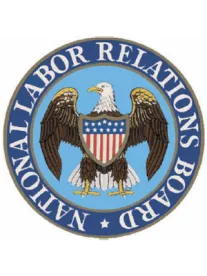Return to Prior “Substantial Direct and Immediate Control” Test Goes Into Effect April 2020
Back in September 2018, the National Labor Relations Board (NLRB or Board) published a Notice of Proposed Rulemaking that would define, by administrative rule, the standard for determining when two unrelated employers are deemed “joint employers” of a group of employees under the National Labor Relations Act. (See our prior post here.) The Board’s initiation of the rulemaking process came after several years of contentious litigation resulting from its controversial 2015 decision in Browning-Ferris Industries, which changed the standard that had governed joint employer determinations for decades and allowed for a joint employer finding based on only indirect, and even unexercised control, by one employer over the terms and conditions of another employer’s employees. (Our discussion of the Browning-Ferris Industries decision)
After an extensive notice and comment period in which more than 29,000 comments were received, the NLRB’s final joint employer rule will be published on February 26, 2020, to be effective April 27, 2020. The rule, which will become Section 103.40 of the NLRB’s Rules and Regulations, restores the joint employer standard that existed prior to the Browning-Ferris Industries decision, and provides additional guidance to all stakeholders – employers, employees, and unions – on those factors that will, and those that will not, support a joint employer finding.
To be a joint employer under the new rule will require that an employer both possess and actually exercise substantial direct and immediate control over one or more of the essential terms and conditions of employment of another employer’s employees. The final rule explicitly defines certain key terms in it, including what are “essential terms and conditions of employment,” such as wages, benefits, hours of work, hiring, discharge, etc., and also explains what constitutes, and what does not constitute, “direct and immediate control” over these terms, as well as what “substantial” control means (i.e., more than control exercised on a sporadic, isolated, or de minimis basis). The rule also clarifies that although indirect and even reserved but unexercised control can be considered as part of the joint employer analysis, such control cannot support a joint employer finding without substantial direct and immediate control.
Joint employer status under the National Labor Relations Act is important because if two employers are deemed to jointly employ a group of employees, each is legally obligated to bargain with any union that represents those employees, each is liable for any unfair labor practices committed with respect to the employees, and each can be the subject of economic pressure, i.e., picketing, if there is a labor dispute involving the employees. Joint employer issues arise most frequently in situations where one employer obtains employees from through a staffing company and in the context of franchisor-franchisee relationships, where the franchisor may have certain control via the franchise agreement over how franchisees handle employment matters concerning their employees. For these employers, the final rule provides a welcome return to a more business-friendly interpretation of the joint employer standard.
Along with publication of the new rule, the NLRB issued a Fact Sheet, which can be accessed here.




 />i
/>i


